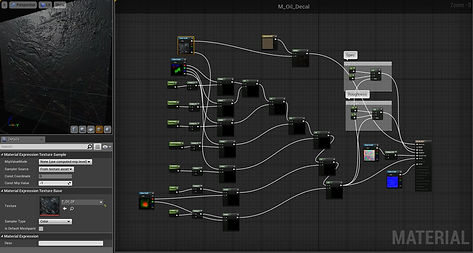Marcelo Spiezzi Raimbault
Game Developer
ABOUT SCRAPPED
Scrapped is student project developed at The Guildhall at SMU by a team of 14 students as our capstone project.
Scrapped is a single player, third person, three-dimensional (3D) platformer incorporating magnetism-based challenges and environmental hazards.
Projected Development Time: 6 Months
Team Size: 14 Developers
Weekly man-hours: 294 hours
Engine: Unreal 4

TRAILER
MY RESPONSIBILITIES
Assistant Producer:
- Helped the team to work efficiently accordingly to the project needs
- Tested and adapted different agile methodologies such as Scrum, Kanban and Rapid Prototyping
- Ensured inter/intra departments communication (art, level design, programming and external producers)


- Organized daily meetings with leads to keep departments on the same page and the project on track
- Created and maintained the project schedule to reflect the project needs and resources available
- Organized and presented the game pitch
- Created the project web-site
- Worked with the team to create usability and playtest surveys and organize their sessions
- Compiled usability and playtest sessions reports
Other duties:
- Helped the team to optimize the project
- Worked with the art team to ensure technical standards such as poly count, texture size, collisions and pivot points
- Created dynamic and layer-based materials
- Created particles systems and visual effects


- Visual Programming using Blueprints in Unreal 4
- Widgets and animations for menus and In-game HUD
- Created the main menu scene
- Contributed with the aesthetics part for some gameplay levels
MINI POSTMORTEM
What Went Right:
- Minimal crunch. Less than 5% of development time (overall)
- The process served the team and not the process itself
- A good amount of playtest (50+ testers)
- Team was very adaptable to changes. Both in tasks and process
What Went Wrong:
- Some features did not have a clear guideline until it was extremely needed
- Source control (Perforce) crashed two time near major deliverables. There was no plan B for this situation.
What We Learned
- Seamless levels are more complicated than anticipated
- Taking something novel takes long to iterate and will take a lot of time to find the best design for it
- Sprint Retrospectives helped us adjust the process
- The pros and cons of following pipelines. Who should the team report to. Who should approve features.
GALLERY
 |  |  |
|---|---|---|
 |  |  |
 |  |  |
 |  |  |
 |  |